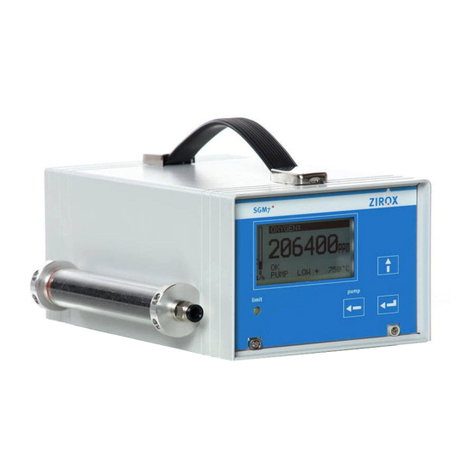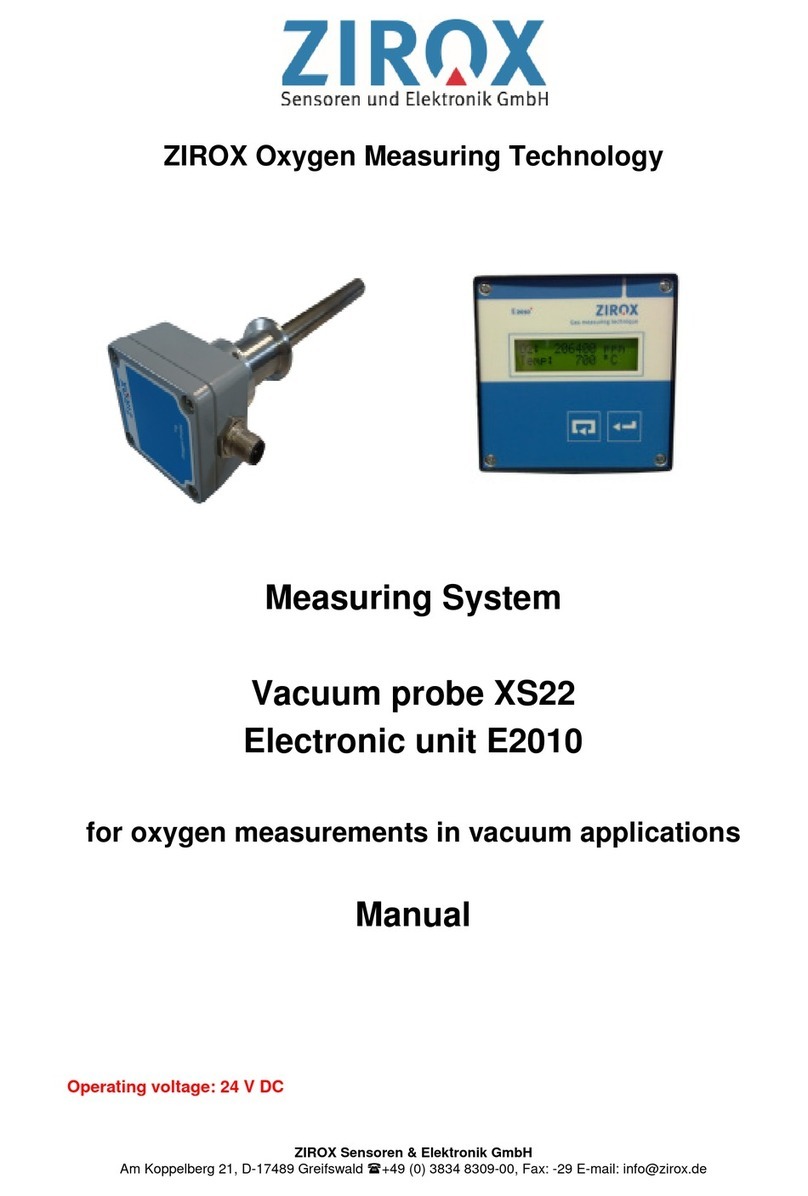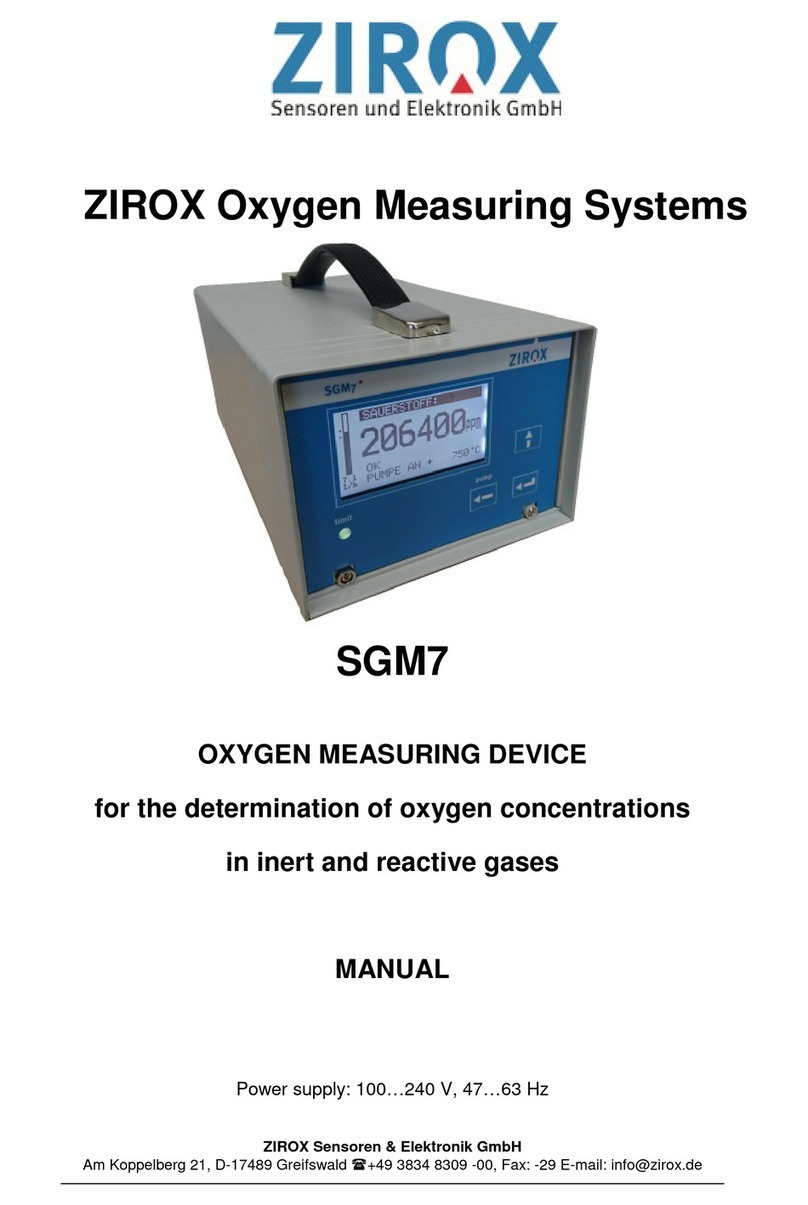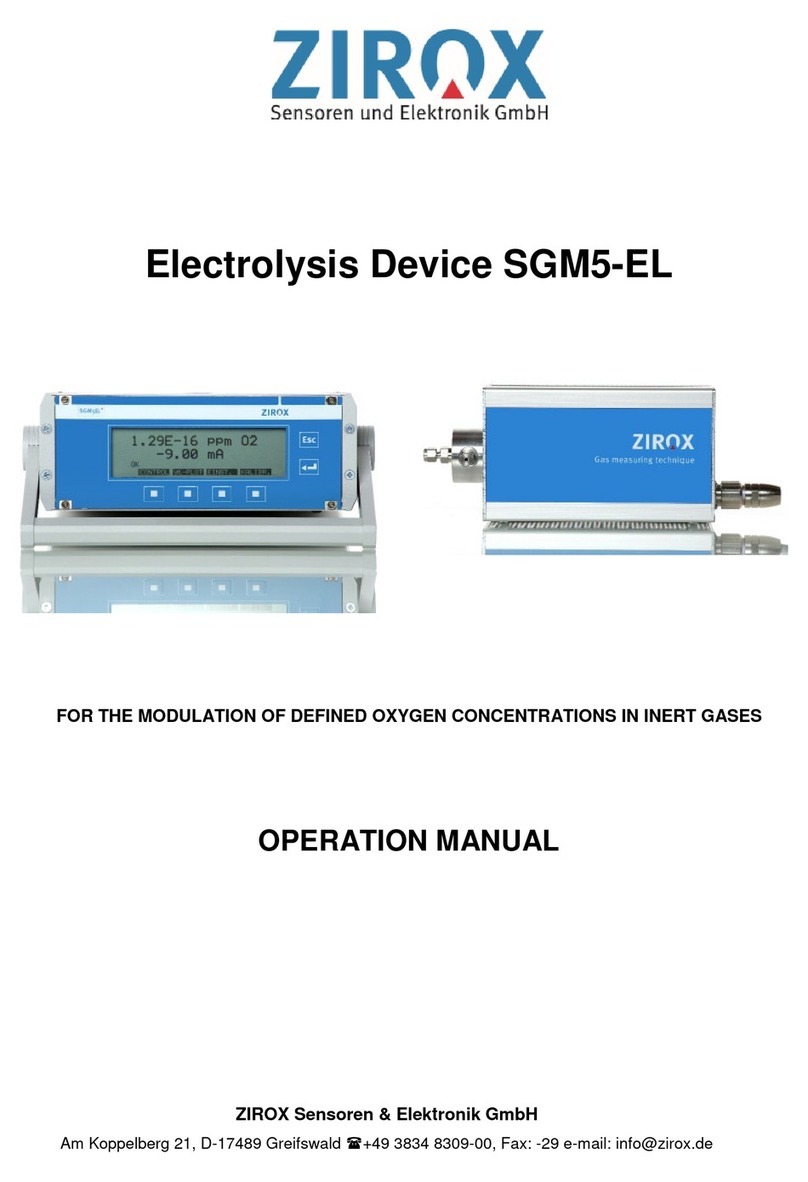
Oxygen Monitor SGM7.2 Contents
Table of contents
1General Information...................................................................................... 5
1.1 Introduction......................................................................................... 5
1.2 Copyright............................................................................................. 5
1.3 Safety symbols and terms................................................................... 6
2Application Field........................................................................................... 7
3Safety Regulations........................................................................................ 8
4Functional Description................................................................................. 9
4.1 Measuring principle............................................................................. 9
4.1.1 General recommendations.................................................... 10
4.1.2 Gas flow quantity .................................................................. 11
4.1.3 Precision of the measuring ................................................... 11
5Technical Data............................................................................................. 12
5.1 Characteristics.................................................................................. 12
5.2 Mechanical data................................................................................ 12
5.3 Electrical engineering/electronics ..................................................... 12
5.3.1 General data......................................................................... 12
5.4 Interface data.................................................................................... 13
6Construction of the Oxygen Monitor SGM7.2 .......................................... 15
6.1 Principle construction........................................................................ 15
6.1.1 General overview.................................................................. 15
6.1.2 Construction principle of the solid electrolyte sensor............ 15
6.1.3 Electronic measured-value processing.................................17
6.2 Using and connection elements........................................................ 18
6.2.1 Power supply ........................................................................ 18
6.3 Front side.......................................................................................... 18
6.3.1 Rear side............................................................................... 19
7Placement and putting into operation ......................................................20
7.1 Installation conditions........................................................................ 20
7.2 Setting up of the operating state....................................................... 20
8Operation and parameter setting .............................................................. 22
8.1 Operation.......................................................................................... 22
8.1.1 Switch on and measurement indication................................ 22
8.1.2 Gas flow adjustment ............................................................. 22
8.1.3 Measuring value monitoring.................................................. 22
8.1.4 Status and error messages................................................... 23
8.2 Parameter Setting............................................................................. 24
8.2.1 Adjustable Parameter ........................................................... 24
8.2.2 Programming menus............................................................. 25
8.3 Calibration......................................................................................... 28
8.3.1 Zero Gas Calibration............................................................. 28
HB_SGM72_Rehm_eng.DOC 3































